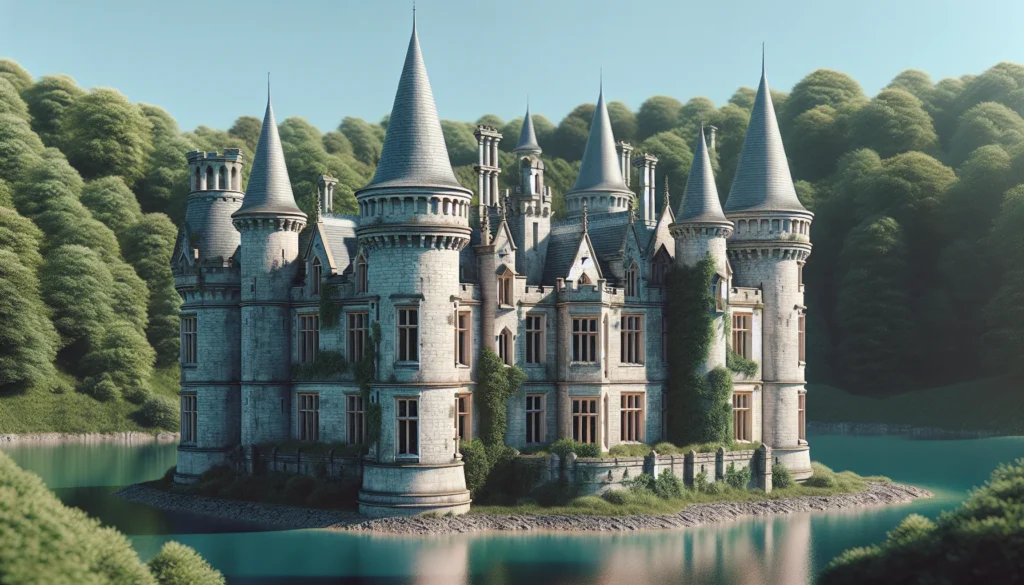Table of Contents
ToggleTurret architecture isn’t just a fancy term for a pointy tower; it’s the architectural equivalent of a superhero cape. These striking structures have adorned castles and cathedrals for centuries, standing tall and proud while whispering tales of grandeur and defense. Imagine a building that not only catches your eye but also makes you feel like you’ve stepped into a fairy tale or an epic battle scene.
From medieval fortresses to modern homes, turrets add character and charm, turning ordinary spaces into extraordinary landmarks. They’re the architectural equivalent of a cherry on top—who wouldn’t want a little whimsy with their walls? Dive into the fascinating world of turret architecture, where history meets creativity, and discover why these elegant features deserve a spot on your design wishlist.
Overview of Turret Architecture
Turret architecture encompasses unique design features that prominently display visual interest and historical significance. These elements often appear as vertical extensions on buildings, highlighting their decorative and functional roles. Historically, turrets emerged in military structures, serving as lookout points and defensive fortifications.
Various architectural styles incorporate turrets, from Gothic to Romanesque, each adding distinct characteristics. Gothic cathedrals often showcase slender spires, while Romanesque examples feature stout, rounded formations. Such diversity allows turrets to adapt to multiple design aesthetics and settings.
Creativity drives modern interpretations, where architects integrate turrets into residential and commercial buildings. Innovative designs may include glass-clad turrets, which blend contemporary materials with classic forms while providing panoramic views. Turrets can foster an inviting atmosphere and significantly enhance curb appeal, making properties stand out in urban and rural environments.
The impact of turrets extends beyond aesthetics; they also symbolize heritage. Noteworthy buildings around the world, such as Neuschwanstein Castle in Germany and Edinburgh Castle in Scotland, exemplify the timeless appeal of turret architecture. Preservation efforts often focus on these structures, ensuring they maintain their historical integrity and cultural significance.
Turret architecture reflects a synthesis of artistic expression and functional design through various historical and modern contexts. The versatility and appeal of turrets contribute to their enduring presence in architectural landscapes.
Historical Significance
Turret architecture possesses deep historical roots and reflects its varied roles in the past.
Origins of Turret Architecture
Turrets originated in the medieval period, primarily serving as defensive structures. They provided lookout points for monitoring incoming threats and enhancing visibility. Early examples, seen in castles, demonstrate their dual purpose for security and aesthetic appeal. Notably, the Romanesque period emphasized functional design, integrating turrets into its robust structures. These features underscored the importance of protection. Additionally, turrets became symbols of power and status, often crowning the residences of nobility.
Evolution Through the Ages
Through time, turret architecture evolved considerably. The Gothic period reimagined turrets with intricate designs that showcased artistry and craftsmanship. Buildings during this era featured slender, soaring forms that captured the eye. In the Renaissance, a shift toward symmetry and classical proportions influenced turret design, emphasizing harmony. Subsequent movements, including Baroque and Revival styles, saw splendor and ornamentation integrated into turret forms. These transitions highlighted changing architectural trends while maintaining turret’s core functions. Today, modern architecture embraces turrets with innovative materials, blending tradition with contemporary aesthetics.
Characteristics of Turret Architecture
Turret architecture showcases distinct attributes that set it apart from other design styles. Key features include unique design elements and structural support methods that enhance both aesthetics and functionality.
Design Elements
Turrets often incorporate conical roofs, giving them a distinctive silhouette. Decorative materials, such as stone and brick, enhance visual appeal while ensuring durability. Additionally, windows placed at varying heights contribute to the structure’s character and promote natural light. Ornamental details like finials and crenellations add an extra layer of charm, showcasing craftsmanship. The integration of classical and modern styles creates a versatile approach to turret design, allowing for innovative interpretations that resonate with contemporary trends.
Structural Support
Structural support in turret architecture relies on robust engineering principles. Load-bearing walls typically sustain the turret’s weight and provide stability against lateral forces. Vertical columns can enhance support while also adding aesthetic value. This combination ensures the turret remains anchored to the main structure, maintaining integrity over time. In modern designs, materials like steel and reinforced concrete may supplement traditional methods, allowing for greater height and intricate shapes that push architectural boundaries.
Notable Examples of Turret Architecture
Turret architecture is prominent in structures across the globe. These examples showcase the design’s flexibility and impact.
Famous Buildings
Neuschwanstein Castle in Germany exemplifies romantic turret architecture. Its whimsical towers create a fairy-tale aesthetic, attracting millions each year. Edinburgh Castle in Scotland serves as a historic stronghold. The turrets highlight its strategic military significance while offering stunning views of the city. Similarly, the Château de Chambord in France features multifaceted turrets with intricate details, illustrating Renaissance innovation. These buildings illustrate how turrets enhance beauty while grounding architectural identity in history.
Cultural Impacts
Cultural narratives often intertwine with turret architecture. Turrets symbolize power, fortitude, and elegance within societies. In literature, castles with turrets evoke adventure and romance, appearing in countless stories. Films frequently utilize turreted settings to emit a sense of fantasy. The desire for these elegant structures often mirrors societal aspirations for stability and grandeur. Public fascination with turreted buildings reaffirms their role in shaping cultural heritage and identity. Furthermore, preservation efforts underscore the importance of maintaining these architectural icons for future generations.
Modern Applications
Turret architecture finds relevance in various modern applications, enhancing both aesthetic appeal and functionality.
Turret Architecture in Contemporary Designs
Contemporary designs utilize turret architecture to create dynamic visual impacts. Architects integrate turrets into residential and commercial buildings, infusing them with unique character. Examples include modern homes featuring turret-like elements, which provide elevated views and light penetration. Additionally, commercial spaces leverage turrets to establish recognizable identities, promoting brand visibility. Innovative designs often incorporate materials such as glass and metal, merging traditional styles with modern sensibilities. This combination fosters a seamless blend of the old and new, attracting attention and interest from the public.
Challenges and Innovations
Challenges exist when integrating turret architecture into modern buildings. Architects face regulatory constraints and modern engineering standards that dictate design aspects. Overcoming these issues often requires innovative approaches like lightweight materials and advanced construction techniques. Sustainability emerges as a key focus, with many designs aiming for energy efficiency while retaining traditional charm. Architectural firms increasingly explore 3D printing and modular construction methods, enabling more complex turret shapes while adhering to structural safety. Emphasizing these innovations addresses challenges, ensuring turret architecture remains relevant in contemporary contexts.
Turret architecture stands as a testament to the creativity and ingenuity of builders throughout history. These structures not only enhance the aesthetic appeal of buildings but also carry deep historical significance. Their evolution from military fortifications to modern design elements showcases their adaptability and enduring charm.
As architects continue to push boundaries with innovative materials and techniques, turret designs are likely to remain a prominent feature in both residential and commercial spaces. The fascination with turrets reflects a broader cultural appreciation for architectural beauty and heritage, ensuring that these captivating structures will inspire future generations.







